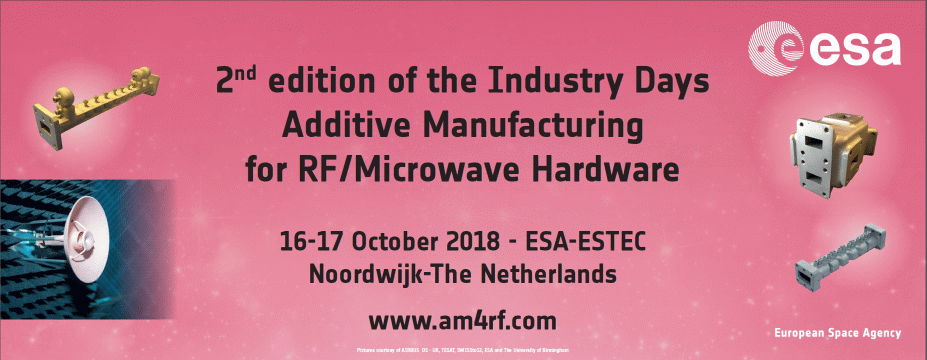Speaker
Dr
Yi Wang
(University of Birmingham)
Description
The talk will give a review of Birmingham’s research on 3D printed filters in the last four years focussing on the latest results from 3D printed filters at W-band using metallic materials. Our work has explored the benefits of 3D printing technology in a number of areas. 3D printing enables the production of some unusual and complex structures that are difficult to achieve using conventional fabrication techniques. This has led to lightweight and low loss filters based on high-Q spherical resonators demonstrated at X-band . We investigated techniques to enhance the thermal handling capability of the filter by ceramic filling and demonstrated designs with wide spurious-free band . A 500 MHz helical filter was produced based on complex helical resonators with fine-tuned dimensions and in a single structure without any soldering joints . This could potentially lead to resistance to vibration and low passive intermodulation. With ESA we have used 3D printing to produce some complex multi-port signal distribution structures such as a waveguide Butler matrix with integrated filter function and an orthogonal mode transducer . They are convoluted structures that are difficult to build using conventional machining.
With our 3D printing partners, we are pushing the frequency of the filters using higher-precision 3D printing techniques. Produced from polymer resin using a stereolithography technique, a 5th-order W-band filter with built-in UG387 flanges achieved a measured insertion loss of 0.4 dB at 90 GHz with a 11% bandwidth . For metallisation, non-radiating slots along current lines were cut in the waveguides. Recently, a similar design was prototyped from steel using a high-precision micro selective laser sintering technique . Slots are no longer required and special considerations were made to avoid overhangs. Effects of metal coating were investigated and the measured insertion loss of 1 dB was achieved at 90 GHz. More detailed design considerations and information about the build quality will be provided in the presentation.
(A full abstract with references can be found in the attachment.)
Why your contribution is relevant for the event?
Our research work in the last four years is very well aligned with the topic of the workshop. We hope to share our findings with the community and more importantly to seek partners to bring the work forward.
Primary author
Dr
Yi Wang
(University of Birmingham)
Co-author
Prof.
Michael Lancaster
(The University of Birmingham)

